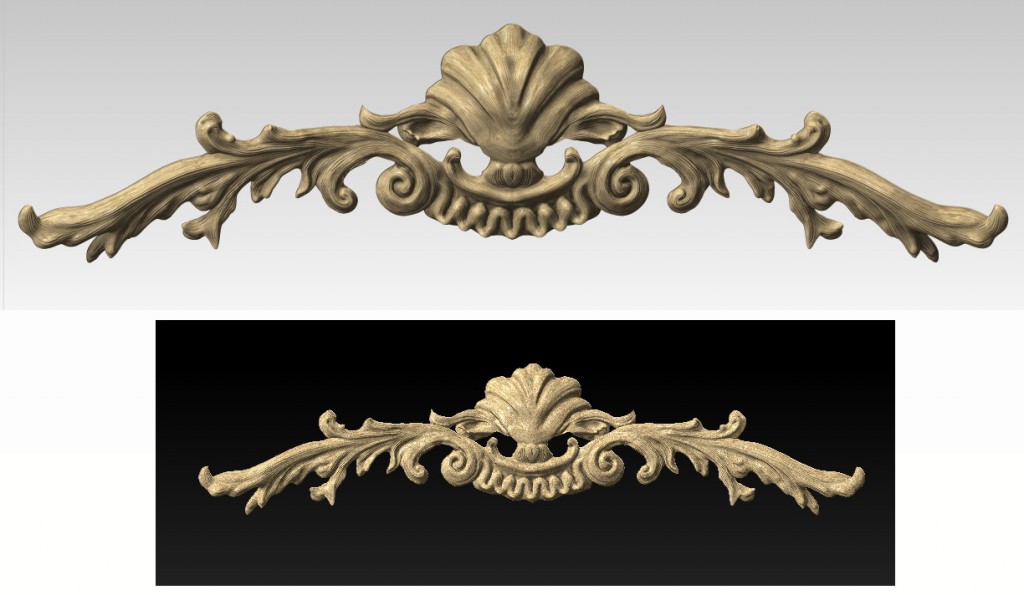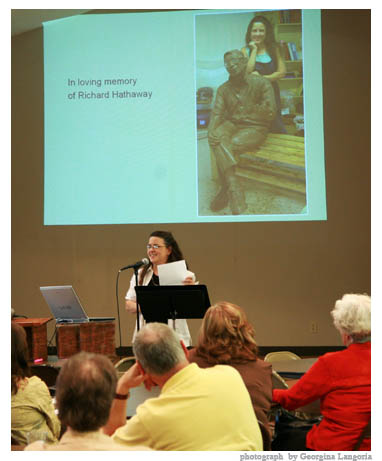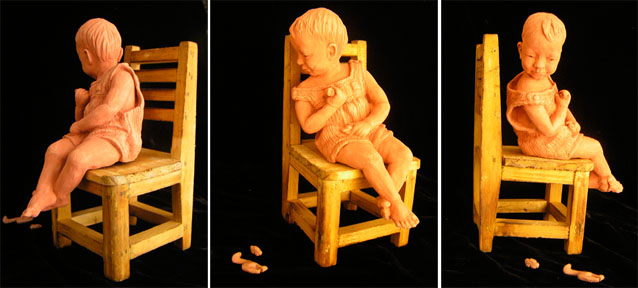Which Medium Enables You To Work More Spontaneously? An Interview Cont.
6. Which medium enables you to work more spontaneously?
Pause, pause, pause.
I would be inclined to say traditional medium, but there is so much that the digital medium has to offer and it is rapidly changing— I can be quite spontaneous. For example, posing a Daz model in the projects I mentioned earlier is so spontaneous for me. Unfortunately, I do a lot of sculptures of children and wish they would expand that line more. I’m also now using the posing of Daz models to assist me with 2d work – More Illustration on this blog.
When I think about architectural sculpture, as mentioned before, I would say digital. But I think the important element is that it is not an either or scenario; it is taking a mix of many different technologies and traditional methods and mixing them up for whatever project is at hand. Before my introduction to digital possibilities, my tools fit in coffee cans that sat in my studio, or in a tool box. Now they are also in the office or at service bureaus or as bits of data.
This is an interview of 10 questions by Mathias Herbster of FH Vorarlberg University in Austria directed to Sculptor Bridgette Mongeon about the comparison of digital and traditional sculpture.
______________________________________________________________
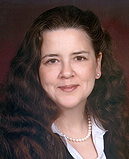
Sculptor, Writer and Speaker
Bridgette Mongeon is a sculptor, writer, illustrator and educator as well as a public speaker.
Her blog can be found at https://creativesculpture.com.
She is also the owner and creator of the God’s Word Collectible Sculpture series
Follow the artists on twitter twitter.com/Sculptorwriter twitter.com/creategodsword
Facebook http://www.facebook.com/bridgette.mongeon
Listen to The Creative Christian Podcast or the Inspiration/Generation Podcast Click on Podcast Host Bios for a list of all podcasts.
Listen to the Art and Technology Podcast
Faced With a Choice: Which Input Device Would You Prefer – Tablet or Haptic Device? An Austrian Student Interview Cont.
5. Faced with a choice: Which input device would you prefer –
Tablet or haptic device?
I work on a cintiq and love it.
I have never been able to work with a tablet. There is a disconnect in my brain when I try. I have never tried a haptic sculpting tool, but would love to, and if any company wants me to review one, send it on!
When I have a maquette that needs to be digitized I use a Next Engine scanner as mentioned in the Mudbox book. They are good and not very expensive. It costs me about $1,000 to have something scanned at a service bureau, so the scanner pays for itself quickly.
This is an interview of 10 questions by Mathias Herbster of FH Vorarlberg University in Austria directed to Sculptor Bridgette Mongeon about the comparison of digital and traditional sculpture.
______________________________________________________________

Sculptor, Writer and Speaker
Bridgette Mongeon is a sculptor, writer, illustrator and educator as well as a public speaker.
Her blog can be found at https://creativesculpture.com.
She is also the owner and creator of the God’s Word Collectible Sculpture series
Follow the artists on twitter twitter.com/Sculptorwriter twitter.com/creategodsword
Facebook http://www.facebook.com/bridgette.mongeon
Listen to The Creative Christian Podcast or the Inspiration/Generation Podcast Click on Podcast Host Bios for a list of all podcasts.
Listen to the Art and Technology Podcast
In Which Medium (Digital or Traditional) Do You Feel More Secure And Why? An Austrian Student Interview…Cont.
4. In which medium (digital or traditional) do you feel more secure and why?
I am comfortable, after 25 years of working in traditional clay of various kinds, and going to bronze. But I’m working hard at the exploration and learning about the possibilities and embracing them as I dance the dance that is digital and bridge the gap between the digital and traditional studios.
This is an interview of 10 questions by Mathias Herbster of FH Vorarlberg University in Austria directed to Sculptor Bridgette Mongeon about the comparison of digital and traditional sculpture.
______________________________________________________________

Sculptor, Writer and Speaker
Bridgette Mongeon is a sculptor, writer, illustrator and educator as well as a public speaker.
Her blog can be found at https://creativesculpture.com.
She is also the owner and creator of the God’s Word Collectible Sculpture series
Follow the artists on twitter twitter.com/Sculptorwriter twitter.com/creategodsword
Facebook http://www.facebook.com/bridgette.mongeon
Listen to The Creative Christian Podcast or the Inspiration/Generation Podcast Click on Podcast Host Bios for a list of all podcasts.
Listen to the Art and Technology Podcast
Does Your Thought-Process In Digital Sculpting Programs Differ From Your Thought-Process In Traditional Sculpting? An Austrian Student Interview Cont.
3. Does your thought-process in digital sculpting programs differ from your thought-process in traditional sculpting?
Yes, especially with the idea of being able to quickly get into a project, digital is slower for me. The other hindrance is I can’t spend as much time as I like with the digital processes. I work from commission to commission and not all offers the ability to use the digitally processes, and that slows me down.
Though I must say, that we should speak of the other digital tools that I use in my process. For example, In this video Digital Art for the Traditional Sculpture Studio I am using Daz 3d models and Poser to “sketch” in 3D. I absolutely love this. As I said, my mind thinks in a 3D form. With Jenna, in the video, we took that to milling, though she was small, it was the process that was important. I also loved working out the design for another client digitally
I am doing that with my present commission. See these posts.
The final results of the presentation using Daz, Poser Zbrush and Photoshop
Working through presentations Poser Zbrush Part-1
Working through presentations Daz, Poser, Zbrush Part-2
My husband, also an artist and writer, sat in on a new public relations conference with Daz 3D. Many of their models are sculptable, and I was very surprised at the geometry I found with this last project. Some might argue, “that is cheating.” I’m not sure it is. If this would have been a life size sculpture commission I would have taken this file of the players and had it milled out digitally- life size, in a heart beat. Though I would have had them milled naked and sculpted the clothes on them. I also expect I would have been cutting away the foam and changing positions as I progressed, but I do the same thing with my large commissions with armatures made in metal. Except I have to bang those with a mallet. Milling for enlargements is so great!
My preferred way of working for large or monumental work would be maquette, 3D scanning, foam, clay on foam. I rarely sculpt larger than life, but there would be no other way, in my opinion, to do this. Unless you are going to work on something like the American and the new digital processes used with data direct to mold. See my article in 2007 Sculptural Review Article.
Again, as an artist I’m paid to get a tangible medium to a client, I have to think to the end of the project. If I am sculpting in clay, I am still thinking through to the process of bronze casting. How does this work, how does this piece, this design translate to the final medium? I have to do the same with digital, though the tools and mediums available are so different and changing daily.
I will also mention that when working digitally, I prefer to change my material to something that resembles my traditional clay. I hate the plastic look in digital sculpting.
This is an interview of 10 questions by Mathias Herbster of FH Vorarlberg University in Austria directed to Sculptor Bridgette Mongeon about the comparison of digital and traditional sculpture.
______________________________________________________________

Sculptor/Writer/Speaker
Bridgette Mongeon is a sculptor, writer, illustrator and educator as well as a public speaker.
Her blog can be found at https://creativesculpture.com.
She is also the owner and creator of the God’s Word Collectible Sculpture series
Follow the artists on twitter twitter.com/Sculptorwriter twitter.com/creategodsword
Facebook http://www.facebook.com/bridgette.mongeon
Listen to The Creative Christian Podcast or the Inspiration/Generation Podcast Click on Podcast Host Bios for a list of all podcasts.
Listen to the Art and Technology Podcast
Which Medium Do You Think Is More Flexible, Digital or Analog Clay? An Austrian Student Interview Cont.
2. Which medium do you think is more flexible, digital or analog clay?
I have described a bit of this in a previous post, however, in defense of digital sculpting, the tools that are available intrigues me. For example, sculpting symmetrically, though no person is symmetrical, I can change that at the end. But in digital I don’t have to sculpt two eyes, or two ears, etc. When I can shorten the amount of time of getting the shape and instead focus on the detail the technical process allows me more time for creativity.
By far the most hindering part of the digital process is the output. There are still a few factors that interfere with my process in this area. One is cost, and the other is the medium, also the build envelope or size. I’m finishing a bust in traditional clay right now, but I would much rather have created it digitally. However, my resources for out put would have been milling in foam, a good armature for larger pieces, but I would have still had to do the details again, and I do not like the stiff look that a piece of foam covered in clay has.
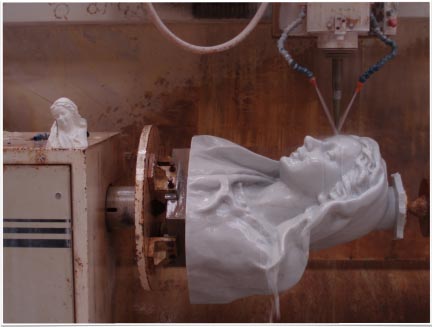
I could mill it out in stone; I must say I anxious to have a project where I can explore this more. All my life I have sculpted in clay, concrete, bronze or pourable mediums. Now with digital milling in stone I can extend my tool set to “stone carver”. With the Digital Stone project, I can create artwork in this medium, as well. This excites me to no end. When I think of the possibilities I also consider the many projects I have given up over the years not having this skill set.
I also love the idea of doing more architectural sculpting work using the digital tools. Creating a finial and being to enlarge it 20% or anything in steps of enlargement is huge. There is no price that can be put on that.
However, digital printing in any other medium is not a viable option, either because of the build envelope or the cost.
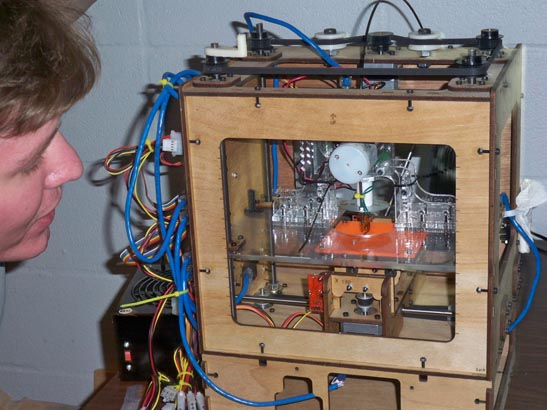
Im intrigued with the research at Solheim Additive Manufacturing Laboratory in the Mechanical Engineering Department on the University of Washington campus. If only I could create in the computer and then digitally print out my form in clay in my own studio, like they are doing at this lab. I think this would be a viable resource for me. I know that the open source “free” 3d printers like Rep Rap or maker bot have some attachments to digitally print in clay, and I’m waiting to see how these evolve.
I think another resources is materialize by .mGX for going directly to bronze, though very expensive. I have visions of using them on an intricate piece similar to Alfred Gilbert’s Virgin Mary or St. Michael. Pieces that would be a nightmare to recreate in a triditional bronze process but could easily be done with .MGX.
The very near future will drastically change the way I work. As many of the patents have ended on 3D printing, I believe you will begin to see a change in the cost factor and availability of home 3D printers. I still may be limited by the build size, unless, of course, I can figure out how to change a machine to accommodate my needs. I’m not sure I am that mechanically savvy.
As I write this, I find an aching. To go from screen to finished project without touching it leaves a hole inside of me. I am afraid I will not be able to “feel” the emotion of the piece unless I touch it. Oh, this is a strange thought.
Though looking at the quick sketches in my Mudbox video I can feel the emotion without touch. Will it feel the same digitally printed?
Remember, I am still a traditional artist. I get paid for a tangible piece of art. I need to get the sculptures out of the computer. I must base my choices on that final output.
This is an interview of 10 questions by Mathias Herbster of FH Vorarlberg University in Austria directed to Sculptor Bridgette Mongeon about the comparison of digital and traditional sculpture.
_____________________________________________________________________________

-Sculptor, Writer and Speaker
Bridgette Mongeon is a sculptor, writer, illustrator and educator as well as a public speaker.
Her blog can be found at https://creativesculpture.com.
She is also the owner and creator of the God’s Word Collectible Sculpture series
Follow the artists on twitter twitter.com/Sculptorwriter twitter.com/creategodsword
Facebook http://www.facebook.com/bridgette.mongeon
Listen to The Creative Christian Podcast or the Inspiration/Generation Podcast Click on Podcast Host Bios for a list of all podcasts.
Listen to the Art and Technology Podcast
What Makes Sculpting In Clay Appealing To You? An Austrian Student Interview Cont.
1. What makes sculpting in clay appealing to you?
I am a tactile person. I love the feel of clay in my hands, the softness of wet clay out of the bag allowing me to quickly rough in the general shape, the leather hard stage providing the perfect texture for carving in intricate details. The smell of earth, the sound of the water as it is sucked into dry clay in a cup— regenerating it into a malleable medium.
Working in this medium for over 25 years there is more. My brain has developed synapsis that are strictly 3 dimensional. I can quickly rough in a figure and gesture, bringing emotion to an object in clay, much faster than I can in a 2d sketch. In fact, I have noticed that my brain misfires, skips, or bluntly—farts when I am trying to bring thoughts from my brain into two dimensions, though I have continued to sketch my entire life, working in clay or a 3D form helps me to express that creativity quicker. My study of emotion in art, especially facial expression and psychology and science behind that, is exhibited in my sculptural forms and my creations of posthumous sculptures. I have trained myself in the precision of finding the emotion and transferring it to the clay. I’m not sure if this transpires in digital form. It probably does, and I do my best to explain it in my lectures, but it is a very abstruse, imperceptible process.
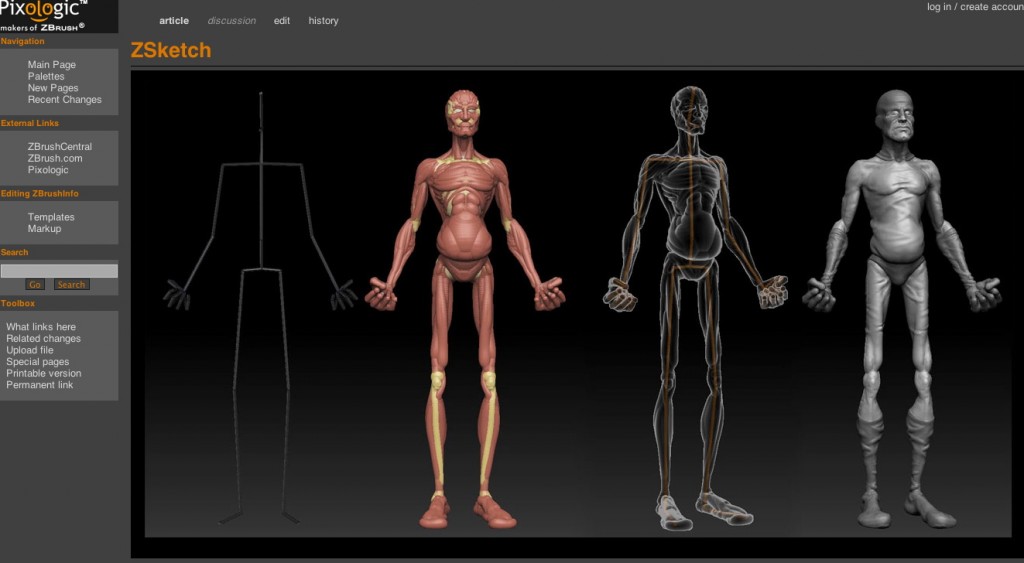
I must say that I do love the immediacy of the medium. I love being able to quickly squeeze and pinch or pull a shape out of a blob. This was probably my most frustrating aspect of digital sculpting, but is quickly changing. I hated having to be bound by the geometry under a piece, it still pisses me off from time to time. Zbrush’s zsketch is more in tuned to my traditional process though I am still butting up against geometry every now and then. I would say the same with being able to pose or move a piece. For me, doing this digitally (Zbrush, Mudbox) is time consuming and leaves me fumbling. I want to play with the form before finalizing it, and I do not feel as comfortable digitally with that as I would like. Some say the geometry is the armature. To me, that is a poor analogy, it is more like grit that is caught in my traditional clay and totally irritating me as I try to dance my hand over it.
This is an interview of 10 questions by Mathias Herbster of FH Vorarlberg University in Austria directed to Sculptor Bridgette Mongeon about the comparison of digital and traditional sculpture.
_____________________________________________________________________________

Sculptor, Writer and Speaker
Bridgette Mongeon is a sculptor, writer, illustrator and educator as well as a public speaker.
Her blog can be found at https://creativesculpture.com.
She is also the owner and creator of the God’s Word Collectible Sculpture series
Follow the artists on twitter twitter.com/Sculptorwriter twitter.com/creategodsword
Facebook http://www.facebook.com/bridgette.mongeon
Listen to The Creative Christian Podcast or the Inspiration/Generation Podcast Click on Podcast Host Bios for a list of all podcasts.
Listen to the Art and Technology Podcast
An Austrian Student Interviews Me On Comparison Of Digital And Traditional Sculpture
I have worked hard over the last few years exploring the digital technology and trying to bridge the gap between digital sculpture and traditional sculpture. I have explored the process in my book Digital Sculpting inMudbox Essential Tools and Techniques for artists, with the Art and Technology podcasts, and in lectures that I have presented to organizations and institutions. Should your institution want me to come and talk about these topics, please feel free to contact me with the details.
My graduate studies and the writing of my first novel distracted me for the past year, but I’m looking forward to getting back to the topics surrounding digital technology. The technology continues to change. I really want to write a book about the technology and the processes. It would be wonderful to focus on the incredbiel artwork stemming from the use of this technology. I see it as a guidebook of resources, as well. There are also many new issues surrounding the use of digital technology that need to be addressed. I’m still looking for a publisher that will get behind the need for this information.
Today, I woke and found an e-mail in my in box from a student from FH Vorarlberg University in Austria. Mathias has the same desire and direction and focus that I have with sculpting/digitally and traditionally and wants to interview me. I’m flattered, but more than that I feel comforted. In my life, it is extremely important to pass on information and help others. I find it in all aspects of my life— a driving force. To see that my podcasts, articles, books and desire have reached half way around the world to someone else with the same passion and direction, is inspiring. I thought it would be interesting to answer these questions publicly on my forum.
_____________________________________________________________________________

Sculptor, Writer and Speaker
Bridgette Mongeon is a sculptor, writer, illustrator and educator as well as a public speaker.
Her blog can be found at https://creativesculpture.com.
She is also the owner and creator of the God’s Word Collectible Sculpture series
Follow the artists on twitter twitter.com/Sculptorwriter twitter.com/creategodsword
Facebook http://www.facebook.com/bridgette.mongeon
Listen to The Creative Christian Podcast or the Inspiration/Generation Podcast Click on Podcast Host Bios for a list of all podcasts.
Listen to the Art and Technology Podcast
Creative Angst- Step 1&2- Baby Steps
As promised, I have a regular segment for this blog titled “Creative Angst” where we will walk through the process of finding our creative selves or reaching a bit further with our creativity. In the first segment Introduction- Creative Angst I introduced this concept. Now on to our next steps.
Step One
Step one- Baby steps
I don’t think this can be emphasized enough. If you start by looking at the entire journey and plan it all out in your head it just feels too overwhelming to take the first steps. Start with baby steps. Start with one step a day. Your step for today can be making the decision to change. There, you have started. Take stock in how this feels. You are changing your life, you are becoming more creative just by taking this one step. Don’t trust yourself? Here, print out and sign this official commitment.
I_________________________on this _________ day of _________ in the year _______have made a decision to change my life and become more creative. I have no idea how that is going to happen and that is o.k. I just know I am opening myself up to that idea.
Your signature. _______________________________________
Step Two-
Now, go to the store and buy yourself a simple notebook. Splurge, get seomthing really creative with bright colors, if that fits your style. Wsrite your name on the cover in marker and the date. In the first page write your commitment out again, and date it. This will be so much fun to read when you achieve your goals. It will be great to see your progress along the way.
This journal will help you to write your creative thoughts, your process, it wil help for you to create a dialogue with your subconscious. If you are not a writer don’t fret. I have plenty of creative processes that will help with that.
Good job. See you are taking baby steps.
It’s hard for many to imagine, but having fun, feeding your passions, and engaging your talents are simple steps that will take you to the bigger answers you seek.
Jonathan H. Ellerby
Nothing is particularly hard if you divide it into small jobs.
Henry Ford
Creative Angst- is a series of blog posts by sculptor Bridgette Mongeon that help individuals to get past their creative angst.
I CAN’T DO THIS ALONE
Do you need a little hand holding, somewhere to be accountable? There are two suggestions
1. Comment on the blog posts,
2 post on the forum. By joining the forum, you may meet other people that will be trying to do just what you are trying to do and you can encourage each other.
WHEN WILL YOU BE BACK?
How will I know when there are more posts? There are several ways-
- Check back to the blog
- Sign up for the RSS feed
- Follow me on Facebook
- Follow me on Twitter
And I will check the forum regularly
_____________________________________________________________________________

Sculptor, Writer and Speaker
Bridgette Mongeon is a sculptor, writer, illustrator and educator as well as a public speaker.
Her blog can be found at https://creativesculpture.com.
She is also the owner and creator of the God’s Word Collectible Sculpture series
Follow the artists on twitter twitter.com/Sculptorwriter twitter.com/creategodsword
Facebook http://www.facebook.com/bridgette.mongeon
Listen to The Creative Christian Podcast or the Inspiration/Generation Podcast Click on Podcast Host Bios for a list of all podcasts.
Listen to the Art and Technology Podcast
The Publishing Industry And Changes Concerning Faith?
As many of you know I also have a Collectibles Gift line. The God’s Word Collectible company is also the sponsor of two podcasts, of which I am the host. The guests on my podcasts are often reflective of my own personal journey. This month I contacted agent Chip MacGregor from MacGregor Literary Agency. Mr. MacGregor has worked in publishing for a long time. He has sold books to both (ABA) American Book Sellers Association and the (CBA) The Christian Book Sellers Association.
As I complete my young adult novel and begin to think about publishers I’m not quite sure it will fly with Christian publishers, though there is a strong message of faith.
Blessed not Possessed-
Developing a Relationship With the Deceased
“While exploring black magic, a family of witches, the dead, and atheism, 15 year old Caroline’s inquisitive nature and detective skills tests her faith and proves her mother is not possessed.”
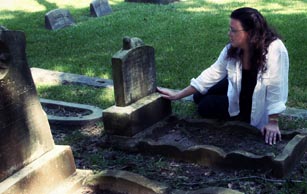
the sculpting of the deceased, and the science behind them.
I have written about what I think is happening with the changes in readership of what others would call “Christian literature, ” and the desires of young readers in a recent article on this blog.
This podcast with Mr. MacGregor follows this same train of thought.
- Can Christian Authors cross over from Christian publishing to secular?
- How is secular publishing changing to accommodate a Christian message?
- Is Christian publishing changing, allowing things that are more “edgy?”
If you are interested in listening you can do so several ways.
1. You can find all of our podcasts on our Facebook Fans. http://www.facebook.com/godswordinspires
While there, please be sure to “like” our page.
2. A link is also on our God’s Word Blog
WANT TO LINK THE PODCAST ON YOUR OWN BLOG OR WEBSITE?
For those of you who are writers and may want to put this podcast on your own blog or website you are welcome to do so by using this link. When people click on the link it will bring up a new browser that plays the podcast.
( Spoiler alert: the novel is quite biographical, based on some of my own experiences with sculpting the deceased and helping people heal through the process. Yes, someone once called me possessed. )
Speaking at The Lone Star Art Guild
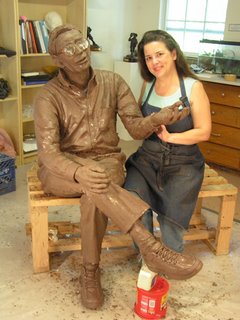
Houston, Texas Studio
Emotion and Gesture- In sculpture, painting and drawing.
I’m so glad to be a part of the opening sessions and workshops for the Lone Star Art Guild Convention, May 20th. I look forward to meeting some new creative friends. For those of you who don’t know me, I am a master sculptor with a studio in Houston, Texas.
We all create art to initiate an emotional involvement. It may start off as our own emotional investment, but we eventually entice the viewer into a similar relationship. I have studied the emotional aspect of art over the years and have come up with some wonderful things to share. I also feel that a great deal of emotion comes from the gesture. Is gesture just figurative? Not always, a tree can have a gesture, as well as a still life.
In this workshop we will examine this simple aspect of emotion and gesture in art as well as take time to create our own emotional investment into a 3d form with clay. Let’s start off the convention being creative. I look forward to meeting you all.
See you Friday evening 7:30-9:30 PM at the Lone Star Art Guild. Check the schedule for the location within the convention center.
For those of you interested—You can see some of my work at https://creativesculpture.com or see my most recent creative endeavors on my blog https://creativesculpture.com/blog
_____________________________________________________________________

Sculptor, Writer and Speaker
Bridgette Mongeon is a sculptor, writer, illustrator and educator as well as a public speaker.
Her blog can be found at https://creativesculpture.com.
She is also the owner and creator of the God’s Word Collectible Sculpture series
Follow the artists on twitter twitter.com/Sculptorwriter twitter.com/creategodsword
Facebook http://www.facebook.com/bridgette.mongeon
Listen to The Creative Christian Podcast or the Inspiration/Generation Podcast Click on Podcast Host Bios for a list of all podcasts.
Listen to the Art and Technology Podcast

